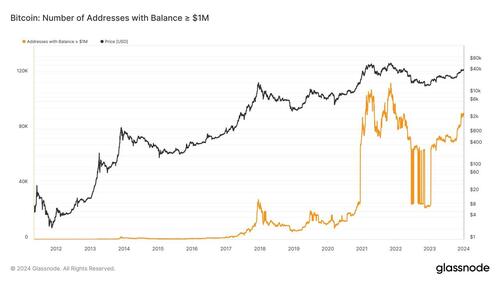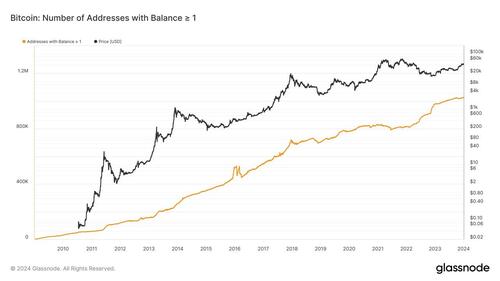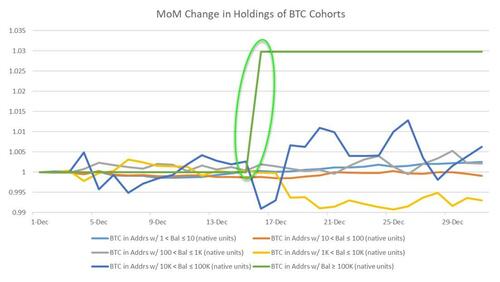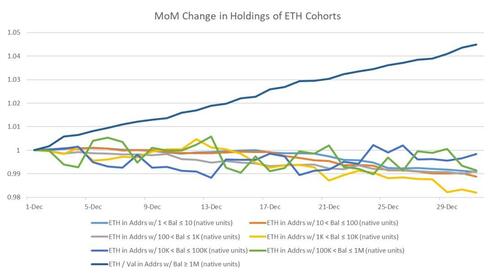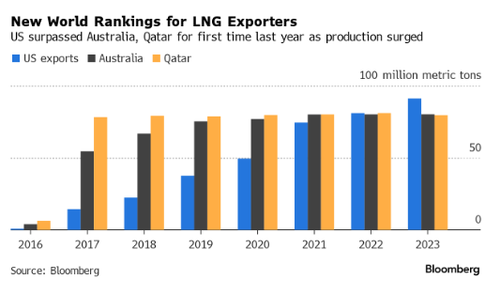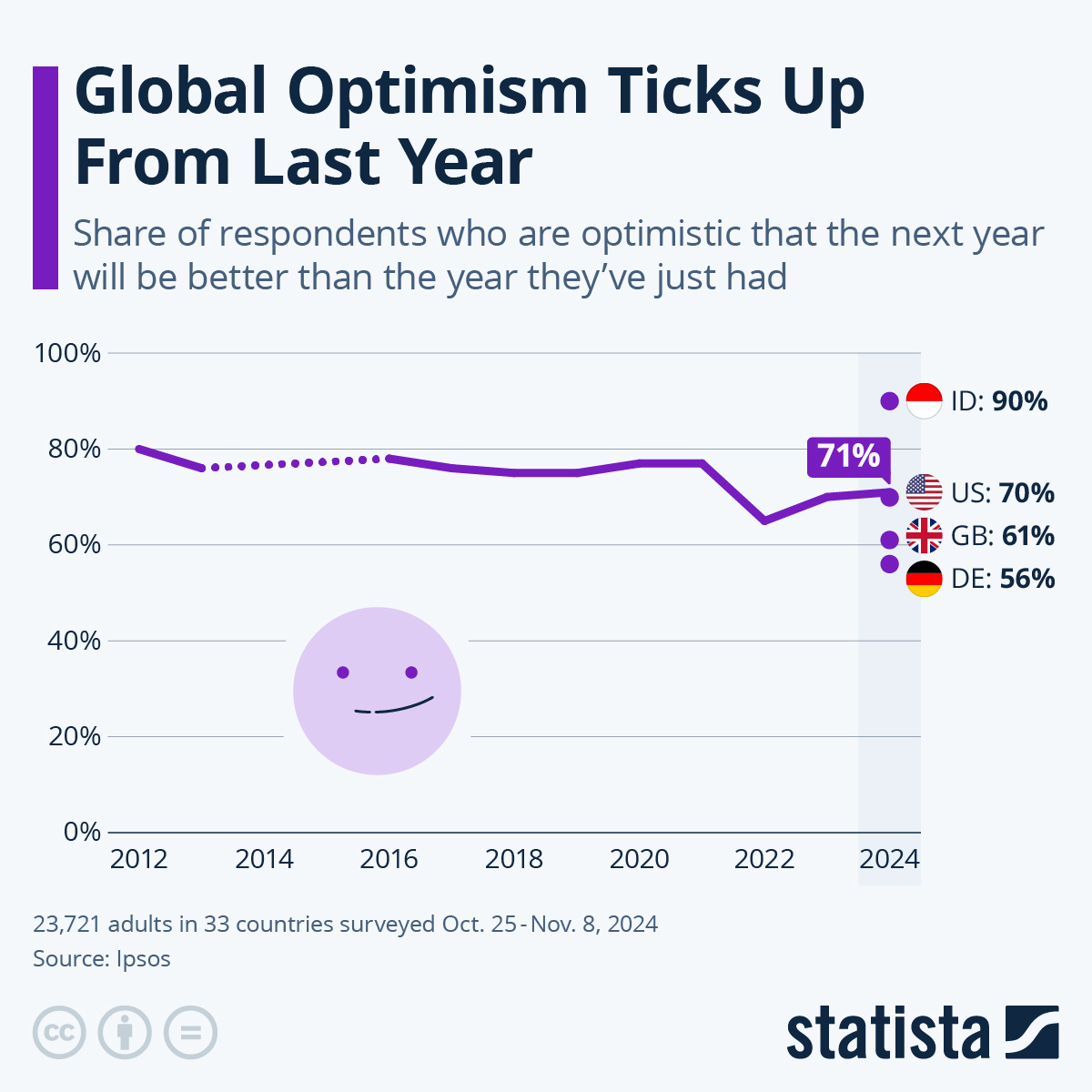The 10 Most Positive Things That Might Happen In 2024
Authored by Mike Shedlock via MishTalk.com,
A close friend told me that my articles are generally too gloomy. He asked me to put together a list of ten good things that could happen in 2024.
Ten Positive Things That Could Happen
-
The war in Ukraine ends
-
The war in Gaza ends
-
AI leads to to amazing medical advances
-
Battery advances reduce the cost of producing batteries by 50 percent and increase the milage per charge by 50 percent.
-
Huge rare earth deposits discovered in the US and Canada with mine permits quickly granted.
-
Mexico agrees to refine the rare earths avoiding NIMBYism and environmental concerns in the US and Canada, which reduces global dependence on China.
-
Republicans and Democrats come up with a compromise solution to the border crisis that works, is quickly adopted, and pleases nearly everyone.
-
Huge advance in desalination techniques provides cheaper ways of converting salt water to fresh water.
-
New cures discovered for several types of cancer reducing or ending the need for chemotherapy.
-
President Javier Milei’s Libertarian economic plan and government worker reduction in Argentina is a huge success.
Points #1, #2, and #10 have some controversial elements.
Eventually, the war in Ukraine will end, but the most likely way is a settlement that causes some loss of territory to Ukraine. A similar setup applies to Gaza.
Regarding point #10, socialists are probably not rooting for Milei. I believe the other 7 things would be welcome by at least 99 percent of the people.
Things Considered But Discarded
-
Neither Trump nor Biden is a presidential nominee. This could be a good thing, but who would the replacements be? Besides, over half the nation might not agree that it’s a good thing.
-
China gives up on uniting with Taiwan. That would certainly be a good thing but I find that too outrageous to consider possible.
-
Doctors finding many ways of wrapping brains on metal trays to keep us from the heat.
It’s Good News Week
The Lesson of 1975 for Today’s Pessimists
Wall Street Journal writer Andy Kessler writes The Lesson of 1975 for Today’s Pessimists
Intel had invented microprocessors only four years earlier. Memory for computers cost maybe a half penny a bit. Eight kilobytes ran around $300. Your current 256-gigabyte iPhone would have cost more than $10 billion. My high school had just installed a clanky Teletype machine with a paper-tape punch and reader and a 110-baud modem to dial into the district’s computer. In the first of many flips, I showed teachers how to use it.
I remember seeing an ad in 1976 in Byte magazine, the bible for homebrew enthusiasts, for a $666 Apple computer. It was more of a circuit board and looked limited. My friends and I were already on our way to starting our own company, MicroTek, to sell our home computers. We were all in, until our parents said we had to go to college.
But here’s the thing: Peering through the thick smoldering smog of the ’70s, you could barely make out the dawn of this new era of opportunity. Amid fears of Paul Ehrlich’s “population bomb” and global cooling, 50 years of amazing innovation and invention were about to begin.
Back then, multimillion-dollar mainframe computers with punched cards and dot-matrix printouts ran corporations. Minicomputers cost tens of thousands of dollars and sat in scientific labs. My homebrew machine cost me $700, funded by several years of various jobs including slinging Stewart’s Root Beer. That was a lot of money. Minimum wage was $2.10.
AI will usher in knowledgeable and friendly automated customer service any day now. But there is so much else on the innovation horizon: osmotic energy, geothermal, nuclear fusion, autonomous farming, photonic computing, human longevity. Plus all the stuff in research labs we haven’t heard of yet, let alone invented and brought to market. Remember that generative AI spent a long time incubating in labs and has been out only a year. Critics dismissed mRNA until it could provide rapid-response vaccines.
I had not seen that article when I came up with my list. I ruled out fusion. It won’t happen in 2024.
The above link is a free link if you wish to read the whole article.
Happy New Year!
Tyler Durden
Thu, 01/04/2024 – 07:20
via ZeroHedge News https://ift.tt/B5P60yI Tyler Durden


